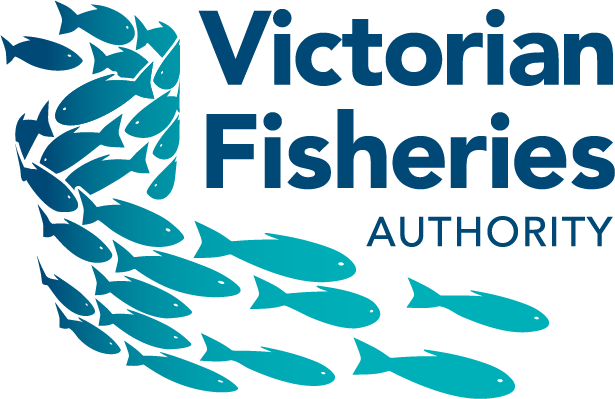State-wide Angler Fishing Diary Program 2011-2014
Executive summary
The Angler Fishing Diary Program (AFDP) is a valuable tool for monitoring and providing data for managing fish stocks in a resource constrained environment. The Program provides time-series of recreational catch rates, catch length-frequency, and catch-at-age composition for key target species extending back more than 15 years for selected Victorian recreational fisheries. Participating Angler Diarists complete diaries in which they record the duration of time spent fishing, the type of bait and size of hooks used, and the species and length of each fish caught.
The AFDP also aims to support the engagement of recreational anglers in fisheries science, thereby opening up a conduit to communicate regulation and conservation imperatives. The involvement of Angler Diarists in supporting stock assessment work is a collaborative problem-solving model of engagement. Through this participatory approach, the recreational fishing sector can become more actively engaged in decision-making around fisheries.
The Victorian Fisheries Authority was awarded funds from the Recreational Fishing Licence fees to:
- maintain and broaden the existing network of Angler Diarists from July 2011 to June 2014; and
- collect a time-series of catch data that will be used to describe trends in recreational fishing for key target species and assist in assessing the fisheries in which these species occur.
Since 2011, the AFDP program has been broadened both in terms of species and geographic coverage. Specifically, it now includes snapper, King George whiting and flathead stocks in Port Phillip Bay, snapper and King George whiting stocks in Western Port and black bream in the Gippsland Lakes. An assessment of the previously established monitoring programs which covered 8 water bodies indicated that the annual number of participating angler diarists and quantity catch data reported were comparable to statistics reported for previous years.
This report summarises the data collected against performance indicators for key species and fisheries for the AFDP from July 2011 to June 2014. Analysis of additional catch data from 6682 fishing trips by the 150 Angler Diarists revealed that their activities targeted the majority of 10 key species within 11 major waterbodies (previous 8 plus 3 others: Port Phillip Bay, Westernport and Gippsland Lakes).
There was insufficient information for the assessment of six species-waterbody combinations, Elephant fish (Western Port), Dusky flathead (Gippsland Lakes), Estuary perch (Anderson Inlet), Mulloway (Barwon river) and rainbow and brown trout (Kiewa River). Strategies to address this gap included focussed media initiatives in cooperation with local government and non-government agencies as partners, as well encouraging current diary anglers to fish those areas deficient in information.
Time series data from the AFDP suggests that populations of key target species in selected Victorian waterbodies, while variable from year to year, are resilient and being managed at sustainable levels. Further, to this, results of the program indicate most (8 of 10 target species monitored) are not persistently declining in abundance. The mean catch rates for the majority of species targeted remained relatively constant or fluctuated within ranges observed in previous years. Results also indicate catch rate trends for both dusky flathead and black bream in Mallacoota Inlet have declined over the last 10 years.
Angler Diarists participated in 7 stock assessment workshops held by Fisheries Victoria during 2011 to 2014. Their data and information contributed to a better understanding of the resource and improved fisheries management. One example of this was in the case of Dusky flathead where Angler Diary data informed a change to the size limits . Instead of a traditional top-down regulatory model, angler diarists worked alongside fisheries scientists and managers to examine and discuss management options and implications based on the catch data they had collected.
As this program evolves, there is a need to engage participants in developing any necessary improvements to the AFDP. Some of the areas for consideration are improved support for participants and communications of information through the better use of technology to enabling results to be uploaded to a web platform, allowing the data to be analysed online by program participants. This would also encourage informal sharing of knowledge and would improve public engagement and energise participation.
Additionally, better integration of the angler diary data as part of the stock assessment process and consequent fisheries management decisions would improve the confidence and engagement of angler diarists. This could be facilitated during the stock assessment meetings where angler diarists are present and explained by the fisheries managers as part of a weight of evidence approach.
While a third of recorded angler trips were for species and/or waterbodies outside of scope of this study, it could be suggested that there is an opportunity to further expand the species surveyed and broaden the waterbodies monitored and assessed by the AFDP. However, there is a need to improve the support to the current Angler Diarists and management of current program before contemplating an expansion of the AFPP.
For the purposes of monitoring recreational fisheries, Angler diary programs have been shown to be cost-effective and scientifically robust. They have also been well supported by the angling community and scientists. In Victoria, given the long history with AFDP this is also the case, but further efforts to improve the program such as referenced above would increase its effectiveness.
Further information
For a copy of the full report please email richard.rogala@vfa.vic.gov.au.
